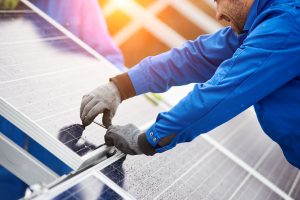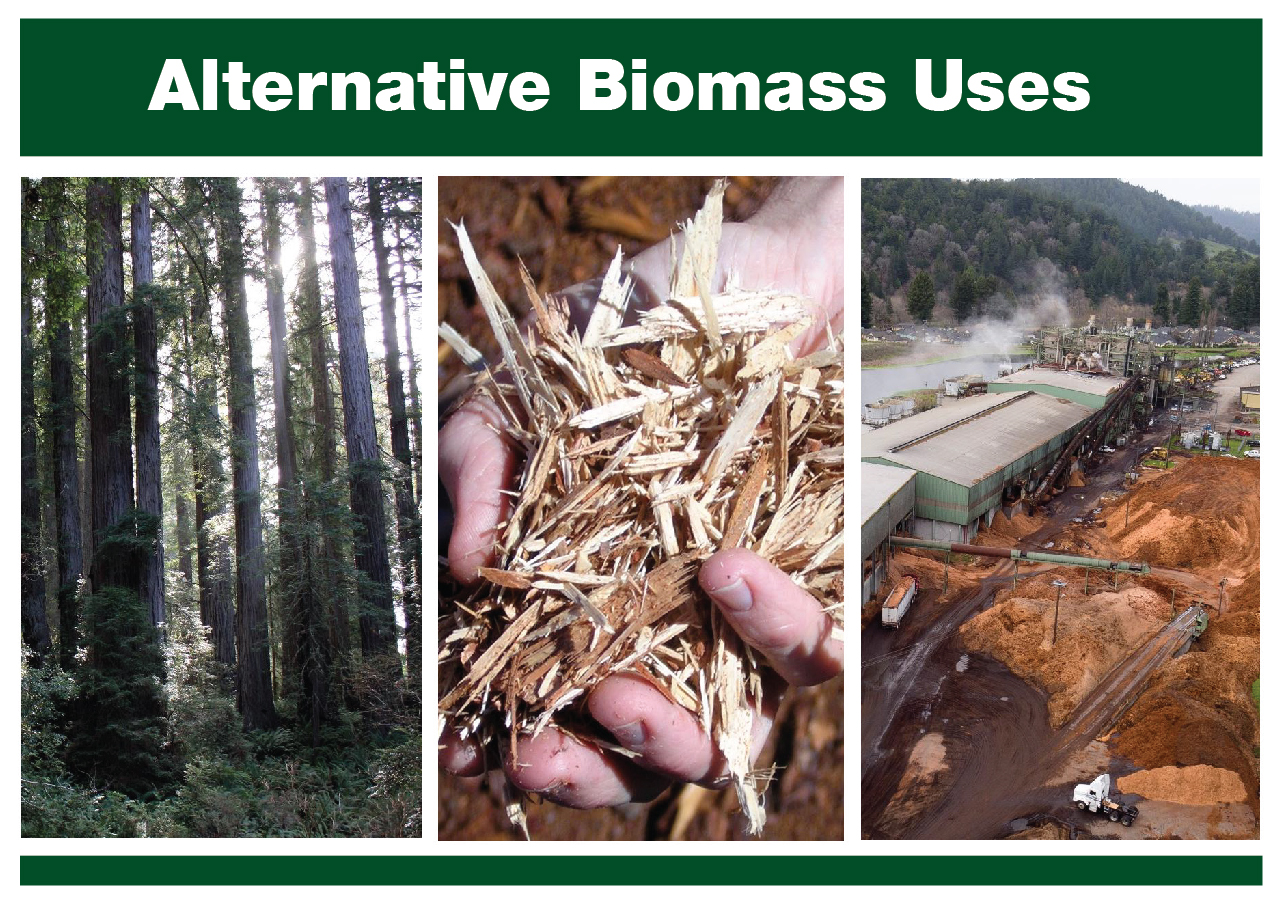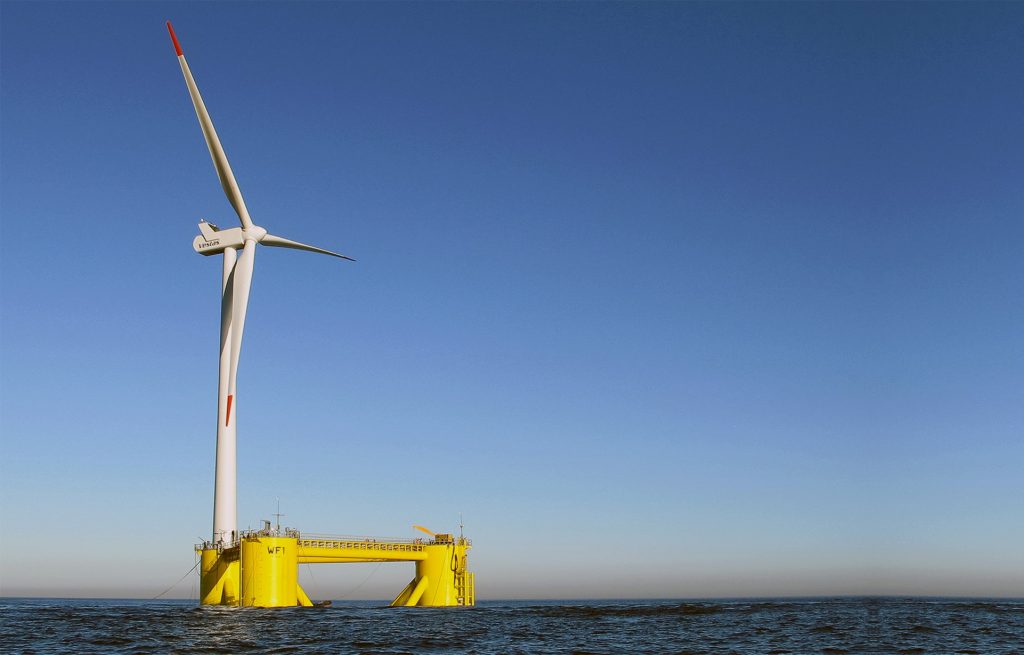Our electricity is currently sourced primarily from wind, solar, and hydropower from California and the Pacific Northwest, plus local biomass. We are working toward a portfolio that largely consists of new renewable energy and energy storage resources under long-term contracts that will contribute to the local and state transition away from fossil fuels.
Power Mix
We are committed to providing power that has more renewable energy and lower greenhouse gas emissions than PG&E at competitive rates.
RCEA’s default service is REpower, which contains a minimum of 40% renewable and 60% carbon-free power.
Customers who want to invest in a higher renewable content can opt up to REpower+, which provides 100% renewable energy service for their home or business. Starting in 2021, REpower+ will also be 100% carbon-free.
Your power choices today

RCEA’s default service is REpower, with a minimum goal of a 40% carbon-free power mix.

Customers who want to invest in a higher renewable content can opt up to REpower+, which provides 100% carbon-free energy service for their home or business.
RCEA 2019 Power Content Label
The power content label shows RCEA’s power mix compared to the statewide average power mix for the most recent reporting year. It is mailed to customers every year in compliance with the California Energy Commission’s Power Source Disclosure Program.
Power Resources
Current and Future Renewable Energy Sources
See resource details below.
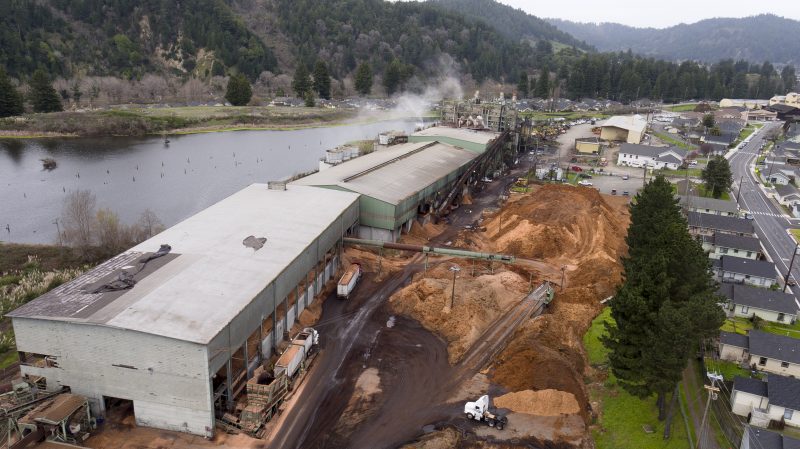
Biomass
The term biomass refers to materials of biological origin, such as forest and agricultural waste, that can be used as fuel for generating electric power. Local biomass power makes up approximately one-fourth of Redwood Coast Energy Authority’s current electricity portfolio. We have a contract with Humboldt Sawmill Company in Scotia, which uses waste material from local sawmills to power their plant. RCEA’s biomass power contract with DG Fairhaven Power on the Samoa peninsula ended in 2020, several months after the plant stopped operating.
RCEA includes biomass as a portion of our current power mix for a number of reasons:
- Biomass power is currently the only utility-scale (i.e. multi-megawatt) source of state-designated renewable electricity in the county and serves as a starting point toward our goal of 100% local renewable power. Our biomass contracts to date are relatively short term (1 to 5 years) and allow us to keep our options open for the future as we seek to diversify our power portfolio.
- Humboldt County biomass power plants primarily use mill waste that would otherwise need to be disposed of by an alternative means. In the absence of the local biomass plants, our contacts in the forest products industry tell us they would resort to trucking the material to more distant power plants, thus increasing total emissions. Other alternatives for local use of the wood waste may be feasible, such as composting or production of durable goods. However, to our knowledge no one is currently positioned to implement these solutions locally at the needed scale. The local mill waste stream is abundant enough that Humboldt Redwood Company is able to fulfill its contract with RCEA without harvesting trees specifically for feedstock.
- Biomass power plants provide high-skill blue collar jobs that strengthen the local economy.
- Humboldt County is the number one forest products producer among California’s 58 counties. Bioregionally, it makes sense to use local mill waste here, just as it makes sense to use local geothermal power in Sonoma and Lake Counties, wind in the Tehachapi and Altamont wind areas, and solar power in the deserts of southeastern California.
At the time we launched our program, we paid a premium price for local renewable power, in consideration of the plants’ relatively high operating costs and the community benefits discussed above. However, we have since renegotiated these contracts to bring them more in line with prices paid in this region for other forms of renewable power.
Some community members have expressed concern about the emissions of greenhouse gases (GHGs) and air pollutants from the biomass plants. RCEA’s biomass contracts call for strict compliance with federal, state, and local environmental regulations, including air emissions. The state’s GHG emissions rules for power plants count only the “non-biogenic” emissions from fossil fuels such as natural gas that are used at these plants to start up equipment. These fuels make up a relatively small part of the plants’ total fuel use. Emissions from the biomass itself are accounted for by the state separately in the forestry sector, per internationally accepted GHG accounting standards. In recognition of community concerns about biomass emissions, RCEA’s strategic plan as revised in 2019 [link] calls for planning for a transition away from direct combustion of biomass in favor of cleaner alternatives.
Frequently Asked Questions
How many trees are being cut down for electricity production at the local biomass plants?
Response: The plants utilize waste from local lumber mills, not whole trees, as their primary fuel source (according to local forest products industry sources, some whole trees from operations such as roadside vegetation management may be sent directly to the biomass plants). In the absence of the plants, the material would otherwise need to be disposed of by an alternative means, most likely trucking it to more distant power plants, thus increasing total emissions. The local mill waste stream is more than sufficient to allow the plants to fulfill their RCEA power contracts without harvesting trees specifically for feedstock.
Is the biomass power RCEA is buying more expensive than other renewables?
Response: Biomass power is typically more costly than other forms of renewable energy, mainly because it is more labor-intensive to produce. For Humboldt County, this can mean higher power costs, but also means skilled local jobs that help strengthen our economy. RCEA originally contracted its biomass procurement at the lowest price offered to us under a competitive solicitation for biomass power. This was substantially higher than what we were paying for renewable power from other, non-local sources. However, we have since renegotiated this contract to a lower price, and entered a second biomass contract at a comparable price that, inclusive of all power products in the contracts, is approximately at parity with our other renewable resources. RCEA’s current effort to contract for long-term renewables is expected to bring us contracts at prices below what we currently pay for biomass power, as we strive to maintain an affordable power mix.
Why doesn’t RCEA source 100% of its electricity from zero greenhouse gas sources such as solar and wind instead of biomass?
Response: RCEA includes substantial amounts of solar and wind power in our portfolio and is striving to develop these resources locally. Biomass is a “baseload” resource, meaning it provides an essentially constant output day and night to balance out the production from intermittent renewables. Wind and solar are not baseload resources and thus are not available on-demand. Battery storage can alleviate this issue but is not yet cost-effective to deploy at the scale that would be needed to replace biomass’s baseload function in the local power mix.
Can improvements be made to the biomass plants to modernize them and reduce their greenhouse gas and particulate emissions?
Response: RCEA’s current contracts call for power producers to comply with all laws and regulations, including emissions limits. Beyond this, we do not dictate what equipment is to be used to control emissions. Some plant improvements have been made since RCEA began contracting for biomass power, and data to become available to the public in the future through the California Air Resources Board and the California Energy Commission, will show whether this is resulting in lower emissions per unit of energy produced. Further improvements in the plants are possible, but the operators are unlikely to make these investments unless they are ordered to by regulators or offered a higher price for power with plant improvements as a contractual condition.
Clarifications:
Biomass contract length: RCEA is not in a long-term contract with either of the biomass plants. We are in a five-year contract with Humboldt Redwood Company and our one-year contract (with option to renew each year) with DG Fairhaven ended on December 31, 2020. Long-term contracts are ten-year and above, as defined by the State of California for compliance with SB 350, which requires load-serving entities to procure at least 65% of our state-mandated renewable energy under long-term contracts starting with the Renewable Portfolio Standard’s fourth compliance period, which begins in 2021.
Humboldt State University Capstone Class on Alternative Biomass Uses
RCEA’s RePower Humboldt Comprehensive Action Plan for Energy includes the following strategies addressing Humboldt County’s biomass management needs: 1) Support biomass fuels reduction and utilization2) Plan for a long-term transition away from direct combustion of forest-derived biomass and toward lower-impact uses of this material.
In support of these strategies, students of Drs. Sintana Vergara and Tesfayohanes Yacob’s spring 2020 Environmental Resources Engineering capstone design project class focused on alternative biomass uses.
Six teams of students identified and evaluated different energy and non-energy end use cases for local mill waste, with RCEA Power Resources staff as their clients. Here are the teams’ findings:
Executive Summaries
Final Reports
Final Presentations
Recording of presentation
Three students shared their class’ findings on different energy and non-energy biomass uses during a webinar hosted by RCEA. The recording: https://vimeo.com/447221825
- The agenda
Michael J. Furniss report on Biomass in Humboldt County
This Biomass in Humboldt County (PDF) document was prepared by Michael J Furniss, Climate and Forests Consultant to RCEA. The report includes a Brief Summary of Workshops, Consultations, and Research.
RePower Humboldt / Comprehensive Action Plan for Energy Update - 2019 Biomass Public Workshop
October 18, 2019, at the Humboldt Bay Aquatic Center in Eureka
Final workshop in the summer/fall 2019 series explores the role of regional forests and biomass in addressing climate change, and what strategies could be developed to support that role in Humboldt County. Our RePower Humboldt page captures the public comment that went into shaping our strategic plan update, including a focus on biomass.
Panel (in seating order):
- Michael Furniss – Moderator, Consultant to RCEA
- Yana Valachovic – County Director and Forest Advisor, UC Extension
- Kevin Fingerman – Assistant Professor, Energy & the Environment, Humboldt State University
- Jason Davis – Deputy Air Pollution Control Officer, North Coast Unified Air Quality Management District
- Richard Engel – Director Power Resources, Redwood Coast Energy Authority
- Angie Lottes – Assistant Deputy Director for Climate & Energy, California Department of Forestry and Fire Protection
- Dan Chandler – Member 350.org
- Adam Steinbuck – Director, Fiber and Freight, Humboldt Redwoods Company, LLC
Facilitator: Ali Lee
Introduction: Matthew Marshall, Executive Director, Redwood Coast Energy Authority
Video recording: https://vimeo.com/368199665
Links for Additional Information
- U.S. Department of Energy – Bioenergy
- U.S. Energy Information Administration – Biomass
- California Energy Commission Resources:
- California Energy Commission – Biomass
- An Assessment of Biomass Resources in California 2007, 2010 and 2020 (PDF)(see page 69 of the report for the estimated available forest slash and mill residue for Humboldt County)
- California Air Resources Board (CARB) links:
- Biomass stories in the local media:
- Resources from Humboldt State University
- Waste to Wisdom Project
- Schatz Energy Research Center Bioenergy webpage
- Analysis of Supply Chain for Biomass Emissions (PDF) (Thesis by Angela Lottes)
- Forest Management and Climate Change (Michael Furniss, Watershed 458 & 558)
- Cal Fire Biomass and Bioenergy webpage
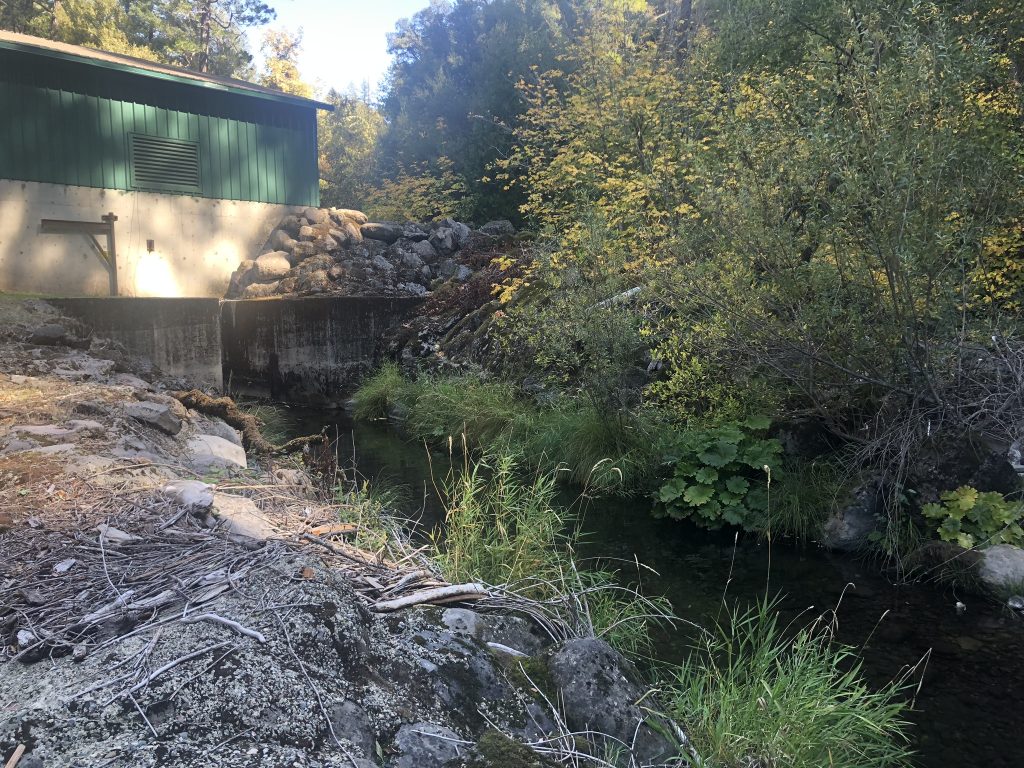
Cove Hydroelectric
In September of 2019, RCEA signed a 15-year power purchase agreement with Snow Mountain Hydro for its Cove Hydropower Project, an existing, seasonal, 5.6 MW run-of-the-river project in Shasta County.
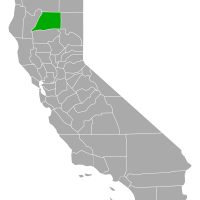
The facility is located on Hatchet Creek, a tributary to the Pit River located northeast of Redding in Shasta County. While not strictly speaking a local project in RCEA’s Humboldt County service area, the Cove project lies within the preferred northwest California area identified in RCEA’s February 2019 request for proposals (RFP) for long-term renewable energy contracts.
RCEA began receiving the full power output of the project in March of 2020. Small, low-impact hydro projects like Cove qualify as renewable energy under state standards.
This type of hydropower project does not impound the creek with a dam or weir, as traditional largescale hydropower projects do. Instead, run-of-the-river projects like this divert a portion of the creek water when flows are abundant enough and run it through a turbine before returning the water to the creek downstream, which has a minimal environmental impact.
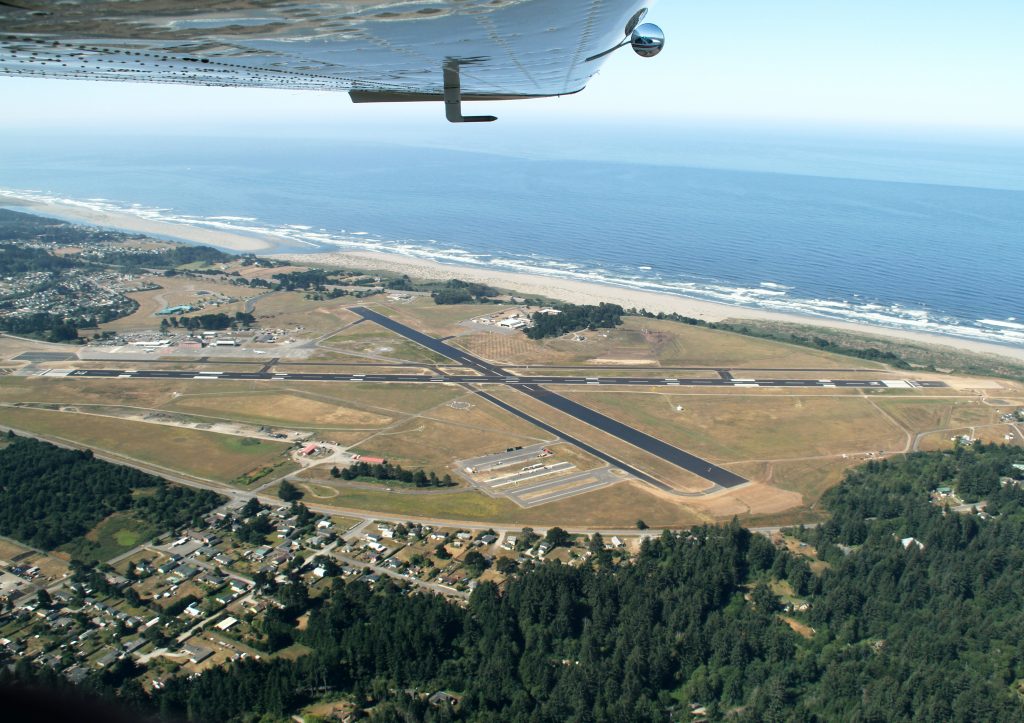
Airport Solar Microgrid
Redwood Coast Energy Authority is partnering with the Schatz Energy Research Center (SERC) at Humboldt State University, PG&E, and the County of Humboldt to build a 7-acre, 2.25 MW solar array and battery energy storage system at the California Redwood Coast – Humboldt County Airport (ACV).
For a copy of the Notice of Availability and Draft Environmental Assessment, visit the Humboldt County webpage, under Project Documents in the menu on the right.
The County is leasing the land for the airport microgrid, RCEA will own and operate the solar photovoltaic and battery systems, PG&E will operate the microgrid circuit, and SERC will be the primary contractor responsible for the project design and technology integration.
The microgrid will include:
- 250 kW net metered system to offset daily electricity usage at the airport
- 2 MW of wholesale power that will feed clean energy directly into the grid
- 2 MW battery storage system providing 8 MWh of energy storage
- Microgrid controller providing the ability to “island” from the main grid so the airport and adjacent Coast Guard facility can run fully on solar and batteries if there is a regional power outage
- Electric vehicle charging stations capable of demand response
The microgrid will provide enough solar-generated electricity to power 430 households and prevent the emission of ~880 metric tons of carbon dioxide annually. The project is being funded by a $5 million grant from the California Energy Commission’s EPIC Program, with $6 million in match funding from RCEA. This system will be the first multi-customer, front-of-the-meter microgrid in Pacific Gas & Electric’s area of service. Groundbreaking will begin summer of 2021 with the system expected to be fully operational in November 2021.
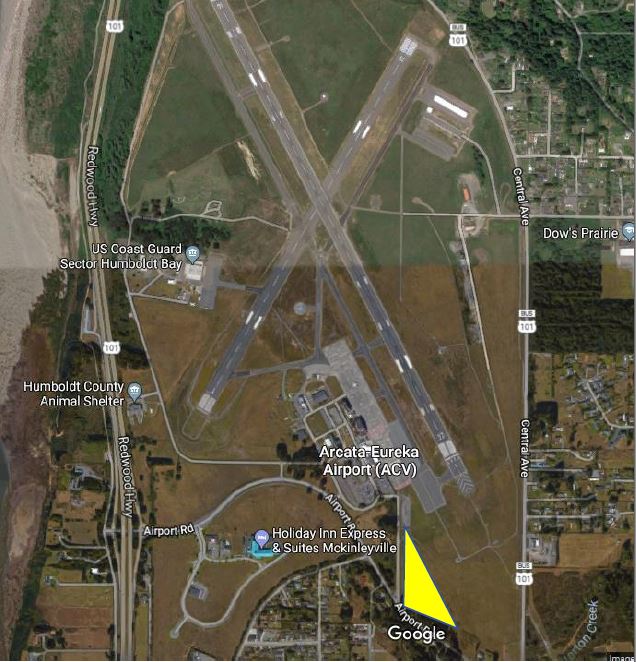
How will the microgrid function?
On a typical day, the energy generated from by the net metered portion of the PV array will be fed directly to the airport and other electric meters to offset their electricity usage. The larger portion of the PV array will generate energy to store in the batteries and deliver power to California’s wholesale energy market. The energy provided to the wholesale market will either serve RCEA customer load or will provide critical ancillary services to the California Independent System Operator (CAISO), but regardless will be timed based on when the grid needs it most. By storing power in the batteries, the microgrid will be able to provide clean energy when demand is highest after the sun has set.
A certain amount of energy in the batteries will be reserved from the wholesale market at all times to maintain the reliability function of the microgrid in the case of a local outage or shutoff. During these events, the microgrid should be able to power the critical functions of the airport and adjacent Coast Guard Air Station indefinitely. This will permit flights and rescue operations to continue across the county, even when the highways are closed.
Why a microgrid at the airport?
Although the ACV airport is known for being particularly foggy, it is actually a logical place for the planned solar array for a number of reasons.
- Available land: Airports have available land that cannot be developed for other uses, but can be used for solar energy generation. Many other airports have chosen to place solar panels on their property, including the Sacramento, Denver, and Pittsburgh airports. Solar panels are designed to absorb light, and the array will be properly positioned and treated with a special coating to minimize glare and ensure pilot safety, in compliance with Federal Aviation Administration requirements.
- Decent solar insolation: Despite its gloomy reputation, the ACV site has higher annual sun exposure than anywhere in Germany, where solar is widely and successfully used.
- Resiliency benefits: The airport and adjacent U.S. Coast Guard Station provide critical emergency functions that can be maintained by the microgrid during a power outage or grid shutoff.

Enhanced energy resiliency and emergency response
RCEA is dedicated to supporting locally produced, sustainable electricity projects that contribute to energy stability in Humboldt County. Our rural location on the beautiful redwood coast is one of our community’s iconic qualities, but it also makes us more vulnerable to power outages and isolation from the state’s electrical grid. This microgrid project will help stabilize power fluctuations during normal operation and provide a local power source for emergency response activities in the event that extreme weather, fires, or earthquakes should cause a regional outage.
The advent of large-scale solar on the grid has created a widespread problem of over-generation at midday, followed by the challenge of needing to ramp up non-solar generation quickly each evening as the sun sets and household loads increase. Pairing the microgrid’s battery storage with the solar generator helps address this regional problem, provides increased functionality for the microgrid, and helps minimize long-term costs of the project for RCEA ratepayers.
As SERC stated in their February 2018 press release, “The Coast Guard Air Station Humboldt Bay provides search and rescue for 250 miles of rugged rural coastline, from the Mendocino-Sonoma County line to the California-Oregon border. Since roads into and out of Humboldt County are often closed by fires and slides, energy stability at the regional airport is crucial.”
This is one of four microgrids designed by the Schatz Center, and will be the largest in the county. The other three are:
- The Blue Lake Rancheria’s main campus. It went live in 2017 and supports their site’s critical role in the community as a Red Cross Shelter facility.
- The Blue Lake Rancheria’s gas station and convenience store. This microgrid will be fully operational in summer 2019.
- Humboldt Transit Authority headquarters. This microgrid is in the design phase, and HTA is currently seeking funding for implementation.
For more information on the Schatz Center’s microgrids, visit their microgrid page. You can also go directly to their Airport Microgrid page.
Opportunity for PG&E to integrate new technology into the grid
The Airport project will be the first multi-customer microgrid in PG&E’s service territory. As regulators, PG&E and other utilities plan for a flexible grid to meet California’s changing energy needs, the ability to smoothly integrate renewable energy and microgrid technology will become increasingly important. Some of the new technologies included in the microgrid will be: utility-scale direct current (DC) coupling of the battery and solar arrays, which buffers the grid from large swings in solar output and makes the solar power 100% dispatchable; an automated control system linked to the battery storage system that will discharge stored solar energy during the evening peak when solar output is typically dropping off; and remote monitoring and control of the microgrid circuit by PG&E from their distribution control center. PG&E will be able to test policies, tariff structures, and operating procedures for the microgrid and battery interconnection, which should help streamline future projects in the utility’s service area.
Articles and Press Releases
- Schatz Energy Research Center:
- Redwood Coast Airport: Technical Kickoff
- The Future of Energy– Schatz update 5/21/19
- September 2020 webinar: Redwood Coast Airport Microgrid: Advancing a resilient and clean energy future– Clean Coalition hosted a webinar with presenters Carmen Henrikson from TRC, Matthew Marshall from RCEA, and Jim Zoellick at the Schatz Center.
- Lost Coast Outpost
- California Energy Commission Okays $10M for College and Airport Microgrids
- ACV Microgrid CEQA Initial Study (PDF)

Sandrini Sol 1 Solar Park
RCEA completed a 15-year power purchase agreement on May 5, 2020 with EDP Renewables North America (EDPR) for the 100 MW Sandrini Sol 1 Solar Park in Kern County, California. RCEA will purchase the full output of the project which is expected to be operational in 2023.
Read more
Under the power purchase agreement, RCEA will receive approximately 300,000 MWh of renewable electricity per year. This will initially meet approximately 45% of RCEA’s current load.
EDPR’s project was selected for a power purchase agreement based on their response to RCEA’s February 2019 request for proposals for long-term renewable energy contracts. This facility will be an eligible facility under California’s Renewable Portfolio Standard. Download the Sandrini Sol 1 Solar Park press release (DOCX) to read more.

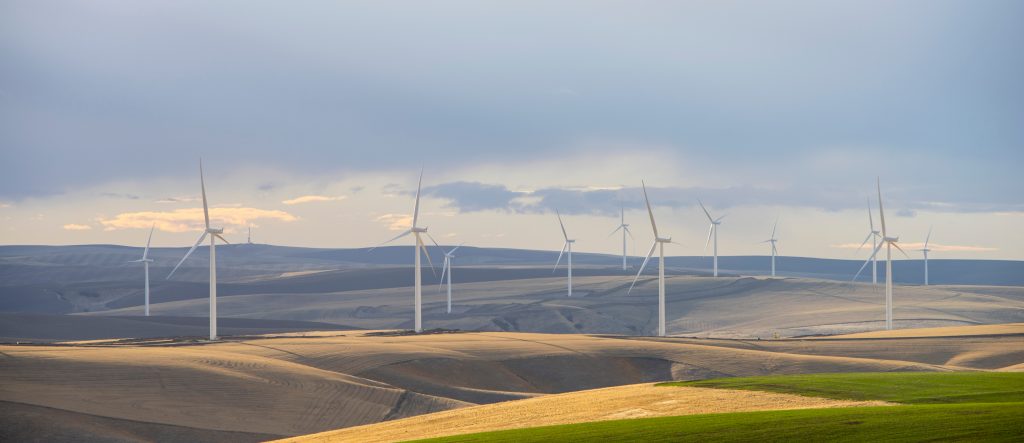
Onshore Wind Energy
In February 2019, RCEA issued a solicitation for long-term renewable energy power purchase agreements (PPAs). RCEA expressed a preference for local projects built in Humboldt County. Terra-Gen submitted an offer for power from its proposed Humboldt Wind project. Of the 40 offers submitted to RCEA by 13 companies, this was the only offer for a project to be built in Humboldt County. In late 2019, the County’s Planning Commission and Board of Supervisors rejected Terra-Gen’s application for a conditional use permit. Terra-Gen is no longer pursuing development of the project. RCEA will continue to seek opportunities for local onshore wind development that meets the community’s and local Tribal standards.
There are very few sites that have high enough average year-round wind speeds to justify the development of an onshore wind project. The map below shows locations deemed to have an adequate wind resource of Class 5 or higher wind speeds, per map data from the National Renewable Energy Laboratory (https://www.nrel.gov/gis/data-wind.html). Using these data and excluding sites on public land, such as the King Range National Conservation Area, slightly less than 1% of Humboldt County’s land area is considered technically suitable for wind energy development.

Frequently Asked Questions & RCEA staff responses to public comments
The following are answers to some questions we have heard from community members about wind energy in general, the Humboldt Wind project, and RCEA’s interest in buying power from this project.
It takes a lot of manufacturing, transporting, and assembly to build a big wind project. Do these projects really reduce carbon emissions?
Response:
Natural gas power plants still provide about one-third of California’s electricity.[1] Building new renewable energy facilities contributes needed capacity to the grid to enable the retirement of the state’s aging natural gas-fired plants. According to the National Renewable Energy Laboratory, natural gas-burning power plants emit on average 465 grams of CO2 for every kWh of energy generated. In contrast, the lifecycle carbon emissions attributable to wind projects average just 11 g CO2/kWh.[2] This is similar to or less than lifecycle emissions associated with other forms of renewable energy.
[1] https://www.energy.ca.gov/almanac/electricity_data/total_system_power.html
[2] https://www.factcheck.org/2018/03/wind-energys-carbon-footprint/
Additional information on the Life-Cycle Global Warming Emissions
Isn’t RCEA developing an offshore wind project? Why not just wait for that instead of building the onshore wind project?
Response:
RCEA is an enthusiastic partner in developing wind energy using floating offshore platforms. This is an abundant resource on the North Coast, but permitting and development of this project is expected to take five years or more and will not be available in time to help us meet our long-term contract requirements under the state’s Renewable Portfolio Standard program. As a first-of-its kind project in North America, it is expected to undergo close regulatory scrutiny and will almost certainly be more expensive than mature onshore wind technology. And as a reminder that no energy technology, renewable or otherwise, is without impacts, the local fishing community has already voiced concerns about offshore wind that will need to be addressed. RCEA considers it prudent to include local onshore wind in our near-term portfolio.
What do people who live near existing wind projects think of them?
Response:
An important resource for answering this question is the National Survey of Attitudes of Wind Power Project Neighbors. As explained on the Survey’s website, “In 2015, the U.S. Department of Energy funded Lawrence Berkeley National Laboratory (Berkeley Lab) to lead a 4-year project collecting data from a broad-based and representative sample of individuals living near U.S. wind power projects. The aim was to widen the understanding of how U.S. communities are reacting to the deployment of wind turbines, and to provide insights to those communities considering wind projects.” Among other things, the survey of over 1,700 residents located within five miles of a wind project in 24 different states found that 57% of these residents had positive or very positive attitudes about the project, while only 8% had negative or very negative attitudes. The survey asked residents how they perceived the fairness of the wind project planning process, and to what extent they were annoyed by sound from the wind turbines or the change to their local landscape. The 12-page summary of the Survey provides key insights about wind projects’ impacts on nearby residents.
Will all the energy generated by future onshore wind projects be exported out of the area?
Response: No, the electricity from onshore wind farms would serve our local demand, both in a contractual and physical sense. Contractually, RCEA will negotiate with developers of local wind projects to purchase their output under long-term power purchase agreements. Physically, the electrons generated by the wind facility would flow toward the nearest connected loads.
Will the electricity from local wind projects occupy all the existing transmission line capacity on the grid, thus reducing the possibility of offshore development?
Response: Onshore wind projects will not preclude the development of the offshore wind project, and realistically, both resources are needed for the state to meet its renewable energy targets. RCEA is currently engaging the CAISO on the feasibility of interconnecting the Redwood Coast Offshore Wind project. The offshore wind project may require transmission upgrades with or without the presence of an existing onshore wind facility, which the results of the study will determine.
The greenhouse gas emissions from the materials and construction of wind projects defeat the purpose of the wind farms.
Response: As with the construction of any project, including other renewable energy projects, there are lifecycle GHG emissions associated with the production and transportation of materials, installation, and maintenance, and decommissioning of a wind power system. However, because the wind electricity would displace that which we would normally get from a largely fossil-fueled grid, the project’s “carbon debt” would be paid back within the first few years of being brought online, depending on the carbon intensity of the grid at the time. The National Renewable Energy Laboratory has published data on the life cycle carbon intensity of wind projects nationally, which they report is lower than the carbon intensity from solar, natural gas, and coal electricity.
Wind farms only last 20 years, and then we will have the waste to deal with after that.
Response: According to a recent study, wind project lifetimes have been increasing since the early 2000s and currently average around 30 years. The cost of decommissioning the wind farm is the responsibility of the project owner, not of the power purchaser or the community where the project is hosted. After the project’s lifetime is over, there is also the possibility that the plant could be repowered by replacing the turbines with newer, higher performance units, as is already being done with wind projects elsewhere in California.
We should import electricity from wind farms elsewhere where impacts are already realized, instead of developing a local wind project.
Response: With the last nuclear power plant in California scheduled to shut down in five years and the state’s aggressive renewable energy targets under SB 100, we need a swath of new large-scale resources to be built very soon. Our contacts in the wind industry tell us that Humboldt is one of the last economically feasible sites in California to build a new wind facility. Also, RCEA’s Board of Directors has set a goal of procuring 100% local renewable electricity by 2030, which we cannot meet with imported wind energy. In addition to our Board’s goals, RCEA is subject to state requirements for minimum renewable energy content and long-term contracting for renewable power.
Does RCEA consider the use of the potent greenhouse gas sulfur hexafluoride (SF6) in wind turbines as a factor in its power procurement decisions?
Response: RCEA has only recently begun hearing of this concern from community members and will look into the issue as it makes decisions related to wind energy procurement.



